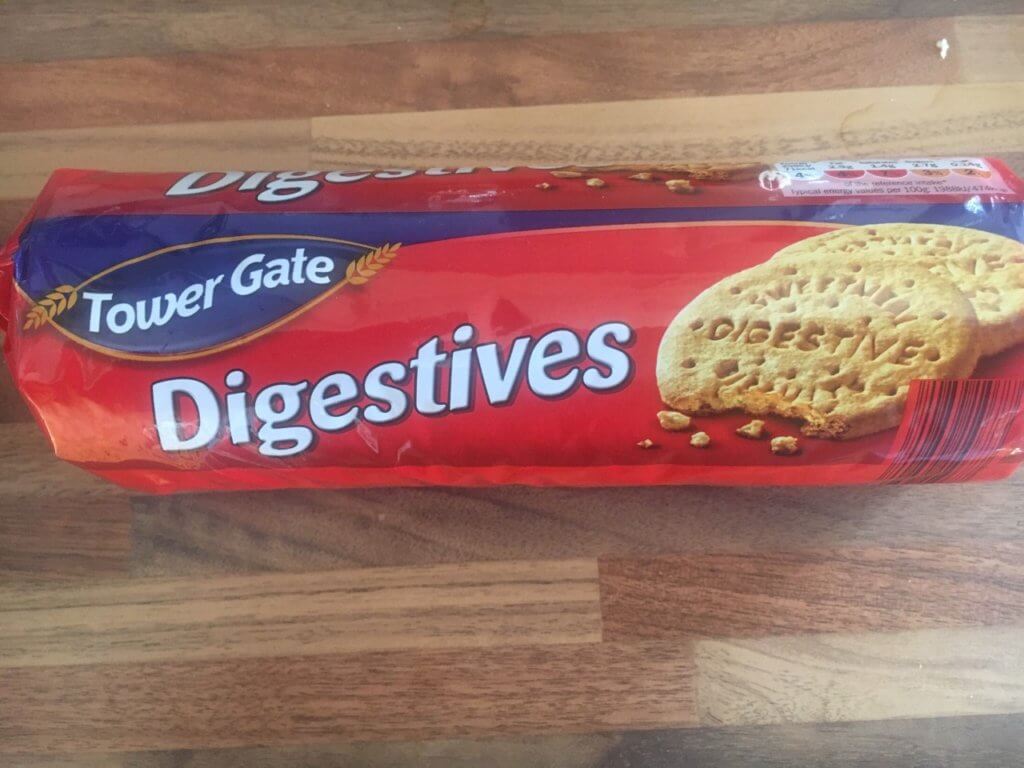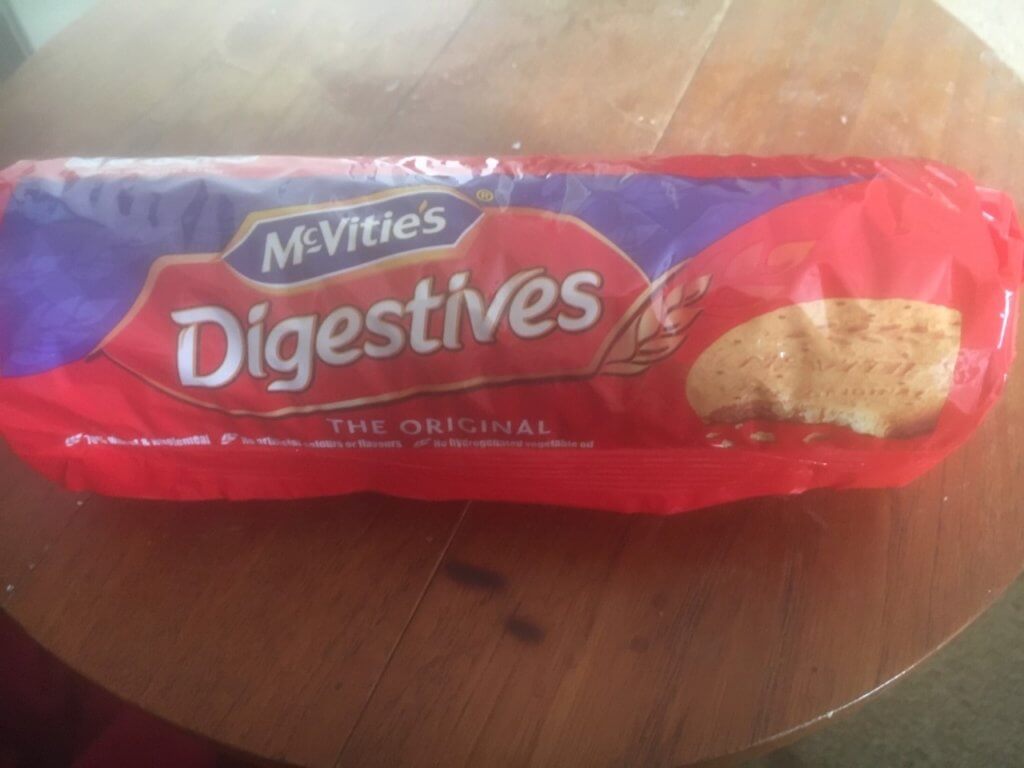
I like a digestive biscuit.
When we were up in Scotland in June I was sent off to an unfamiliar supermarket with a list. I struggled to find everything on the list and was delighted to stumble across a familiar pile of distinctively wrapped biscuits after minutes of looking in many wrong places for them. What a relief!
It was only the next morning that I realised that these biscuits were not quite what I had assumed them to be. They were Tower Gate digestives not McVitie’s digestives.

The difference is obvious when you look carefully but I had seen a mostly red, partly blue, correctly sized and shaped, packet of biscuits with the word ‘Digestives’ in the right place and a partly eaten biscuit as an illustration and I had been ‘fooled’.
This reminded me of Batesian and Mullerian mimicry that I learned about at school and more so at university.
Batesian mimicry is when a tasty species of prey evolves to look like a nasty-tasting species of prey. Predators learn to associate the striking patterns or colours of the nasty-nasting species with a nasty taste and so they avoid things looking quite like them too – and that’s how the yummy species gains an evolutionary advantage.
Mullerian mimics are where two nasty-tasting species evolve to look more similar to each other to cash in on the combined advantage of getting the message across really strongly.
But neither of these types of biscuits, of digestive biscuits, has a nasty taste so they are not Batesian or Mullerian mimics. Opinions differed as to whether there was a difference in taste between the Tower Gate digestives which we had in the house and the McVitie’s digestives which, unfortunately, we did not have. Speaking as a person with huge and cultured experience of digestive biscuits I can quite categorically say that the two types of biscuit do not taste the same (though some, wrongly, claimed that they did). I can further say, that for me, and after all taste is a matter of taste, the McVitie’s biscuits are the superior item – their less tasty (to me at least) similar biscuits are perfectly palatable but not quite of the same excellence.
So I feel, quite strongly, that I, as a predator of digestive biscuits, was a victim of digestivian mimicry where a slightly less tasty species takes the general pattern and colouration of a more tasty species (of biscuit).
[registration_form]
Perhaps the situation where a less palatable species mimics a more palatable one (and presumable increases its likelihood of predation) could be named Averyan mimicry?? Not too sure what the evolutionary implications of this might be considering the implied allopatry, but I would be prepared to do some fieldwork…..
Tower Gate is a Lidl brand (and probably not Scottish in the slightest) so you’ll likely be able to find them closer to home – should you ever decide to switch.
Excellent. A quick google image review of ‘digestive biscuits’ shows many more, with even Cadbury’s conforming. Though there is another lesser but distinct evolutionary line involving yellow and green markings. This seems to derive from the ‘Britannia’ brand which despite its name is not yet found in the UK.
It looks cheeky to copy the package design but sometimes these supermarket brands are made in the same factory as the brand name.
I noticed this with marmalade but they don’t always have exactly the same percentage of ingredients.
Not sure i will even try to make an evolutionary biology comparison but there might be one somewhere.
What you have stumbled upon is an example of convergent evolution, whereby independent organisms acquire similar characteristics while evolving in different habitats (e.g. Tesco and Lidl).
I suppose a comparable situation in nature might be two or more plant species evolving fruits with similar appearance and or odour to persuade frugivores to eat the fruit and thereby disperse the seeds. I don’t know what such a mimicry complex would be called but one can imagine both honest mimics that pack their fruit with tasty nutrients and free-riders whose fruits look just as tasty and nutritious but are actually nutritionally poor and energetically cheap for the plant to produce.
To avoid becoming a victim of digetivian (and other) biscuit mimicry, simply cut out the biscuits. Simples…as they say.
I too have been ‘done’ by this digestivian mimicry. One crucial difference between the two, a difference that is liable to bring abject misery to the unwary, is the difference in performance when it comes to tea tensile loading. Beware the mimicker! Especially when wearing a white shirt.
Anti-Batesian mimicry. Unlike animals, the biscuits exist to be eaten, so the less-tasty version evolves to look like the tastier one, fooling the biscuit predator into consuming the former …
It may be a reflection of consumer opinion but as far as I know there are no counterfeit brands of Moores Dorset Knob biscuits. Nice tin though